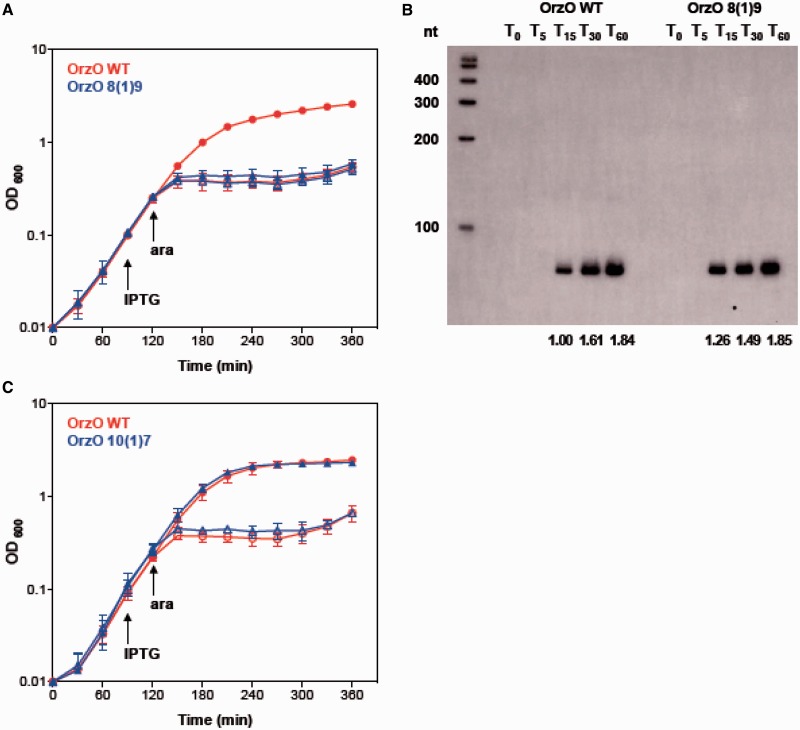Figure 5.
A specific residue within the V1 region of OrzO is necessary for zorO repression. (A) Mutation of the first nucleotide of the V1 region fails to rescue E. coli from ZorO toxicity. Rescue experiment was performed as outlined in Figure 1B except that arabinose was added to a final concentration of 0.002%. Shown are the averages ± standard deviations of pBR-plac-orzO (red circles) or pBR-plac-orzO 8(1)9 (blue triangles), which has the first nucleotide of the V1 region mutated. Solid symbols indicate addition of IPTG; open symbols, no IPTG. (B) Expression of OrzO 8(1)9 is similar to wild type OrzO. Total RNA was isolated from E. coli UTK007 overexpressing zorO (0.002% arabinose) and either OrzO (1 mM IPTG) or OrzO 8(1)9 (1 mM IPTG) as described in ‘Materials and Methods’ section. Quantification of RNA levels is described in the ‘Materials and Methods’ section, with OrzO WT at T15 set to a value of 1. Numbers below the panel indicate the average relative intensities. (C) Mutation of the third nucleotide of the V1 region has no impact on the ability of OrzO to repress zorO expression. The third nucleotide of the V1 region of OrzO was mutated to generate OrzO 10(1)7. A rescue experiment was performed as outlined in Figure 1B with wild-type OrzO (red circles) or OrzO 10(1)7 (blue triangles) expressed from the PLlacO-1 promoter of pBR-plac. Solid symbols indicate addition of IPTG; open symbols, no IPTG. Averages ± standard deviations for three independent cultures are shown.

